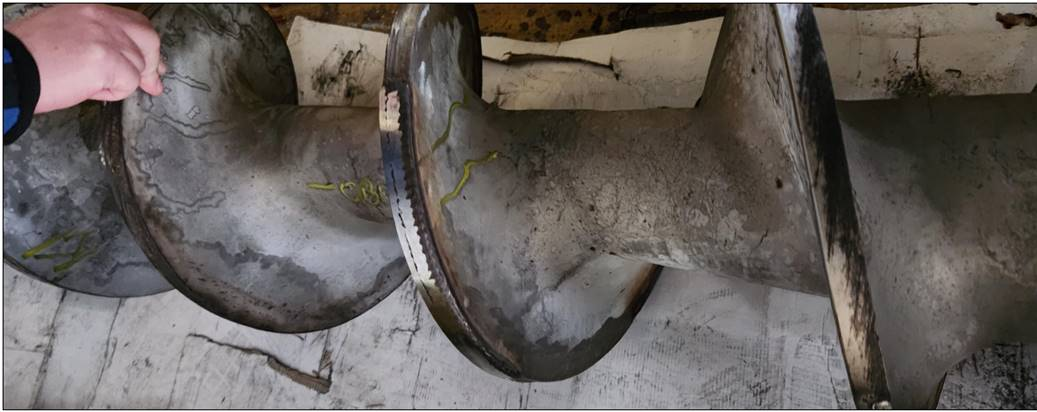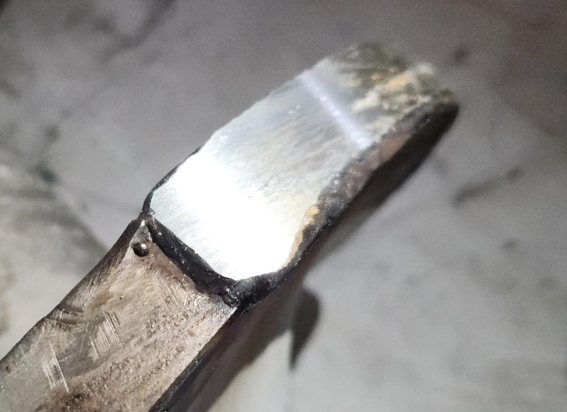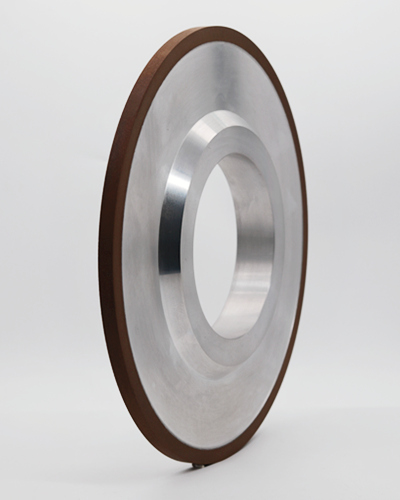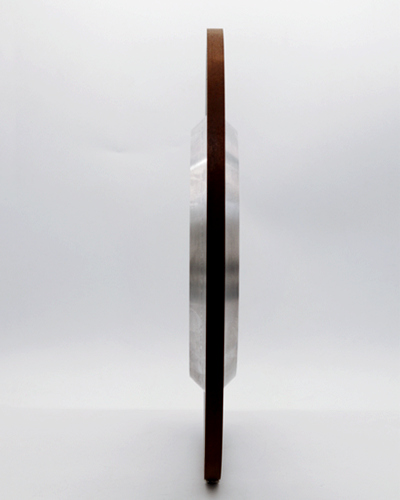Case of Resin Diamond Grinding Wheels for Machining Helical Weldable Parts
What are Helical Weldable Parts?
Helical weldable parts are components that feature a helical or spiral shape and are specifically designed to withstand the stresses of welding processes. These parts are typically constructed from high-performance alloys capable of enduring high temperatures, mechanical stress, and extreme environmental conditions. The term “weldable” implies that these parts are engineered to endure the thermal effects of welding while maintaining their structural integrity, mechanical properties, and functionality.
Resin diamond grinding wheels are highly effective in the machining of helical weldable parts due to their unique properties. These wheels are particularly suited for grinding hard and tough materials, ensuring high precision and surface quality.
The helical shape of these parts often makes them more complex to machine, weld, and grind. Examples of helical parts include helical gears, turbine blades, spiral shafts, and other components that require precision manufacturing. These parts are commonly used in critical applications across various industries, including aerospace, automotive, energy, and heavy machinery, where strength, durability, and precision are paramount.
Helical parts, due to their spiral shape, are subject to specific challenges in machining, especially during the grinding and welding stages. They must be carefully processed to ensure that the helical geometry is preserved and that any potential distortion or warping during welding is minimized. As such, the selection of appropriate grinding tools and techniques is critical in ensuring the final product meets the required specifications.
Applications of Helical Weldable Parts
Helical weldable parts are used in a variety of industries, often in applications where strength, heat resistance, and precision are critical. Below are some common industries and applications where these components are employed:
-Aerospace Industry
In the aerospace sector, helical parts such as turbine blades, fan blades, and rotor components are subjected to extreme conditions of high heat and mechanical stress. These parts are often welded during manufacturing and require precise grinding to meet the exact dimensions and surface finishes necessary for optimal performance. The helical geometry of these parts is essential for improving aerodynamic efficiency, heat dissipation, and overall engine performance.
-Automotive Industry
In automotive manufacturing, helical weldable parts are frequently found in turbochargers, exhaust systems, and other engine components. These parts need to withstand high-pressure environments and extreme temperatures, as well as undergo welding to join different sections. As welding can introduce thermal stresses, these components often require grinding to correct distortions and achieve the necessary surface finish.
-Energy and Power Generation
Helical parts are critical in energy applications, particularly in turbines, compressors, heat exchangers, and other power generation equipment. These parts must endure high temperatures and pressures while maintaining their integrity. After welding, these components undergo grinding processes to refine the surface, improve heat transfer, and ensure that the parts can handle the mechanical loads they will experience during operation.
-Heavy Machinery
In heavy machinery, helical weldable parts such as gears, shafts, and conveyor components are essential for the proper functioning of equipment. These parts are subjected to constant mechanical loads, requiring them to be manufactured to high tolerances. Welding is often used to join components, and grinding is necessary to ensure that the final product maintains its structural strength and operational reliability.
How to Grind Spiral Welding Parts
Grinding spiral welding parts is a technology that requires precise control and involves the application of multiple grinding methods and tools. Since these parts are often made of high-strength, high-hardness materials (such as stainless steel, titanium alloy, etc.), special attention should be paid to the control of thermal deformation and grinding force during the grinding process. The following are several key steps for grinding spiral welding parts:
1. Choose the right grinding wheel
In order to effectively process spiral welding parts, choosing the right grinding tool is the key. Common grinding tools include:
Resin diamond grinding wheel: suitable for grinding hard materials, can provide high precision and finish, especially with good stability at high speed grinding.
Ceramic grinding wheel: used for more precise grinding, can provide excellent surface quality.
CBN (cubic boron nitride) grinding wheel: suitable for particularly hard materials, can maintain good performance even at high temperatures.
2. Grinding process selection
Spiral welding parts can be ground using a variety of processes, mainly including:
External cylindrical grinding: mainly used to grind the outer cylindrical surface of spiral welding parts to ensure size and finish.
Internal cylindrical grinding: used for spiral
Advantages of Using Resin Diamond Grinding Wheels for Machining Helical Weldable Parts
Resin diamond grinding wheels are highly effective in the machining of helical weldable parts due to their unique properties. These wheels are particularly suited for grinding hard and tough materials, ensuring high precision and surface quality. Here are the key advantages of using resin diamond grinding wheels for machining helical weldable parts:
1. High Grinding Efficiency
Resin diamond grinding wheels are known for their superior cutting ability. The abrasive diamonds embedded in the resin matrix are extremely hard and maintain their sharpness over long periods. This allows them to efficiently grind even the toughest materials used in helical weldable parts. Their high material removal rate means that the grinding process can be completed quickly without sacrificing quality.
2. Excellent Surface Finish
One of the primary advantages of using resin diamond grinding wheels is their ability to produce a high-quality surface finish. These wheels can achieve ultra-smooth surfaces with low surface roughness (Ra values), which is critical for parts that require tight tolerances and precision, such as turbine blades, gears, and other helical components.
3. Long Tool Life
Resin diamond grinding wheels are incredibly durable, with a longer tool life compared to other grinding wheels. The hardness and wear resistance of diamond make these wheels capable of maintaining their cutting ability over time, reducing the frequency of wheel changes and minimizing downtime in production.
4. Reduced Heat Generation
Grinding operations can generate significant amounts of heat, which can cause thermal damage to the material, such as cracks, distortions, or loss of mechanical properties. Resin diamond grinding wheels produce less heat during the grinding process compared to conventional grinding wheels. This is especially important for helical weldable parts, which are often made from materials sensitive to heat.
5. Precision Grinding
Precision is essential when machining helical parts, especially those used in high-performance applications. Resin diamond grinding wheels provide the accuracy needed to meet tight dimensional tolerances and complex geometries. This ensures that the final product performs optimally and meets the required specifications for strength, durability, and functionality.
6. Versatility in Material Application
Resin diamond grinding wheels can be used on a wide variety of materials, including stainless steel, titanium, alloys, and high-temperature metals. This versatility makes them suitable for different types of helical weldable parts across various industries, including aerospace, automotive, and power generation.
7. Minimal Material Deformation
Because resin diamond grinding wheels generate minimal heat and stress during grinding, they reduce the risk of distorting or warping the helical part during machining. This is especially important for parts that require high dimensional accuracy and a fine surface finish, as any deformation could compromise the part’s function and integrity.
Recently, Moresuperhard have received one inquiry about grinding helical weldable parts, lets see the solutions we provided together:
| Grinding wheel bond | Resin diamond grinding wheel |
| Grinding wheel grit | 60/80 C125 rough grinding. |
| Wheels size | Wheels size: D650 – T80 – J450 – H304.8 – U50 – X10 |
| Speed of wheel | 35m/s |
| Workpiece | Spiral Conveyor Auger. |
| Workpiece material | Welding carbide blade. |
| Feed amount | 1mm |
| Feed rate | 0.1mm /per |
| Cooling | Wet grinding |
The use of resin diamond grinding wheels in the machining of helical weldable parts offers significant advantages in terms of efficiency, precision, and surface quality. These grinding wheels provide an optimal solution for machining complex, high-performance components that must withstand extreme conditions. With their ability to handle tough materials, maintain high material removal rates, and produce superior finishes, resin diamond grinding wheels are an essential tool in the production of helical weldable parts across industries such as aerospace, automotive, power generation, and heavy machinery. As manufacturing processes continue to demand higher performance and precision, the adoption of resin diamond grinding wheels will play a key role in meeting these needs.




